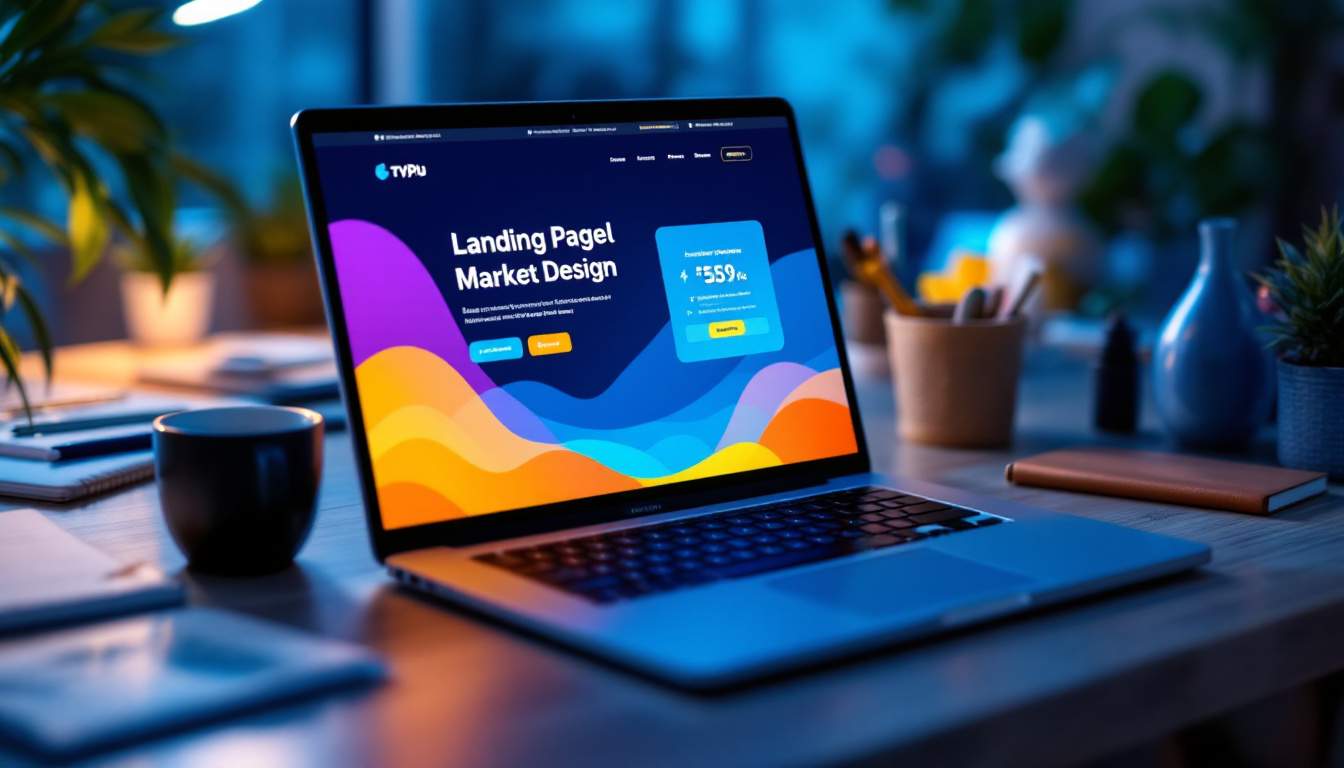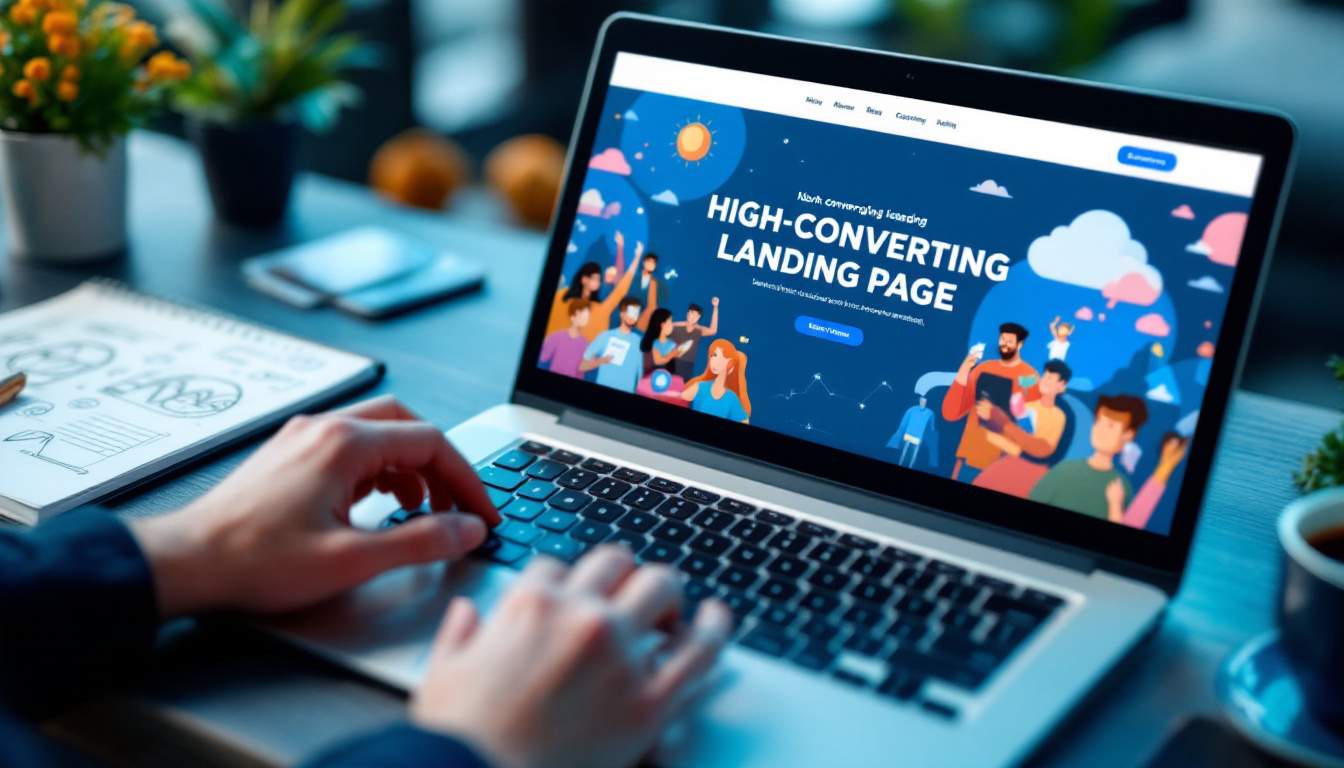
In today’s digital landscape, having an effective landing page is vital for any marketer aiming to convert visitors into customers. As we step into 2025, understanding how to create a high-converting landing page becomes even more imperative. This guide will walk you through the essentials of landing page design, optimization techniques, and future trends that will shape the way we connect with our audience.
A high-converting landing page focuses on a singular goal: turning visitors into leads or customers. Each element of the page should work towards encouraging the visitor to take a specific action, whether that’s signing up for a newsletter, purchasing a product, or downloading a resource.
At its core, a high-converting landing page is designed with user experience in mind, ensuring that every component leads the visitor toward making a favorable decision. This specificity is what distinguishes it from regular web pages that may invite general browsing instead of fostering a conversion-focused environment.
These pages typically feature clear calls-to-action (CTAs), compelling content, and persuasive design strategies to capture the attention of potential customers. Understanding your audience and their needs is crucial in shaping this experience effectively. For instance, utilizing language and imagery that resonates with your target demographic can create a sense of familiarity and trust, which is essential for guiding them toward conversion.
High-converting landing pages are vital for maximizing your marketing efforts. When designed effectively, they improve not only the conversion rates but also the return on investment (ROI) for your campaigns.
Moreover, they provide valuable insights into customer behavior that can be leveraged for future marketing strategies. A well-performing landing page can significantly reduce the cost per acquisition and increase customer lifetime value when aligned with the overall digital marketing strategy. Additionally, A/B testing different elements of the landing page, such as headlines, images, and CTAs, can yield data-driven insights that help refine your approach over time. This iterative process allows marketers to adapt to changing consumer preferences and optimize their strategies for better engagement and conversion rates.
Furthermore, integrating social proof elements, such as testimonials, reviews, or case studies, can enhance credibility and encourage visitors to take action. When potential customers see that others have had positive experiences with your product or service, they are more likely to feel confident in making a decision. This psychological aspect of persuasion plays a crucial role in the effectiveness of landing pages, making it essential to incorporate these elements thoughtfully into your design.
The world of web design is ever-evolving, and as we approach 2025, various trends are set to redefine how landing pages are developed and perceived. Staying ahead of these trends will ensure that your landing pages remain competitive and effective.
As visual aesthetics continue to play a crucial role, we anticipate more minimalistic designs focusing on user-centric experiences. Expect landing pages to feature:
These elements not only beautify the page but also help in guiding the visitor’s journey toward conversion. Additionally, the integration of micro-interactions—small animations that respond to user actions—will further enrich the user experience, making the landing page feel more alive and responsive to the visitor’s input. This can include subtle hover effects, animated buttons, or even progress indicators that provide feedback as users navigate through forms or other interactive elements.
Technological advancements will shape landing page design in astonishing ways. As artificial intelligence and machine learning tools become more integrated into web development, personalized experiences will be paramount.
These technologies will enable marketers to tailor landing pages to individual user behaviors, preferences, and demographics, ultimately increasing relevance and improving conversion rates. This level of personalization can lead to not just higher conversions but also stronger customer relationships. Furthermore, the rise of voice search and smart assistants will necessitate a shift in how content is structured, with landing pages needing to accommodate voice-activated queries and provide concise, easily digestible information that resonates with users who prefer auditory engagement. As more users turn to voice interfaces, optimizing landing pages for this new mode of interaction will become essential for maintaining a competitive edge.
Understanding the elements that constitute a successful landing page is important to ensure maximum conversions. While design and aesthetic appeal are significant, several key components must be optimized for best results.
Your headline is often the first thing visitors will notice, and it must capture their attention immediately. A strong headline should convey the primary benefit of your offer and encourage readers to stay on the page.
Subheadlines provide additional clarity and entice the user to read more. Together, these elements set the tone and expectation for what the visitor will find after digging deeper into your content. Additionally, using power words or emotional triggers in your headlines can create a sense of urgency or excitement, compelling users to act quickly. Testing different variations of your headlines through A/B testing can also reveal what resonates best with your audience, allowing you to optimize for higher engagement.
Visual content such as images and videos significantly impacts user engagement and retention. High-quality visuals can effectively communicate your message and highlight product features better than text alone.
Moreover, incorporating video can increase the likelihood of conversion by fostering a more emotional connection through storytelling. Aligning your visuals with your brand identity further solidifies the overall message. Consider using lifestyle images that depict your product in real-world scenarios, as these can help potential customers envision themselves using your product. Infographics can also be a powerful tool, as they simplify complex information and make it more digestible, enhancing the user experience and keeping visitors on your page longer.
Social proof is a powerful motivator in the decision-making process. Featuring testimonials, case studies, or user-generated content can significantly boost credibility and trust.
When potential customers see that others have validated your product or service through positive experiences, they are more likely to make a decision in your favor. Including reviews can reduce skepticism and increase confidence in your brand. Additionally, showcasing diverse testimonials from various demographics can broaden your appeal and demonstrate that your product meets the needs of a wide range of customers. Consider using video testimonials for an even more compelling presentation, as they add a personal touch and authenticity that written reviews may lack. This multifaceted approach to social proof can create a powerful narrative that resonates deeply with prospective buyers, enhancing their overall perception of your brand.
Once you’ve grasped the key elements of an effective landing page, it’s time to begin the actual construction. Every aspect is vital, from selecting the right platform to designing your layout and crafting compelling copy.

Choosing the right platform is foundational to building your landing page. Consider platforms that allow for easy customization and integration with your existing tools.
Popular website builders and landing page software provide analytics features which allow you to track performance and make data-driven decisions. Evaluate your options based on the specific requirements of your campaign.
Design is more than just aesthetics; it’s about configuration and user journey. Utilize grids to organize content and ensure everything is aligned properly.
Be mindful of whitespace which can enhance readability and prevent overwhelming users with too much information. A clean layout, combined with strong visuals, makes navigating the page intuitive.
Compelling copy is the heart of your landing page; it communicates your value proposition and persuades the visitor to act. Use clear language and focus on benefits rather than features.
Incorporate action-oriented language in your CTAs, making it evident what you want the user to do next. Ensure that the tone matches your brand persona and resonates with your target audience.
Even after you have designed and built your landing page, your work isn’t done. Continuous optimization is necessary to ensure you are maximizing its effectiveness and achieving desired conversion rates.

A/B testing allows you to compare two versions of your landing page to determine which performs better. By tweaking different elements like headlines, images, or CTAs, you can gather valuable data to refine your approach further.
Implement systematic testing to make data-driven decisions that will enhance user experience and conversion rates. Over time, even small changes can yield significant improvements.
Robust analytics tools provide insights into user behavior and performance metrics. Monitoring key indicators such as bounce rates, time on page, and conversion rates will guide your optimization efforts.
Utilize these insights to identify areas that require improvement, allowing you to make informed changes that can enhance overall performance and effectiveness.
Finally, don’t overlook the importance of SEO in your landing page strategy. Incorporating relevant keywords, optimizing meta tags, and focusing on mobile responsiveness will increase visibility on search engines.
A well-optimized landing page attracts organic traffic, which can greatly enhance your overall conversion rates without incurring additional advertising costs. Strive for a balance between compelling content and SEO best practices.
In conclusion, creating a high-converting landing page in 2025 requires a collaborative approach that encompasses understanding trends, applying essential elements, and constantly optimizing your strategy. By focusing on these priorities, you can build landing pages that not only attract visitors but also successfully convert them into loyal customers.